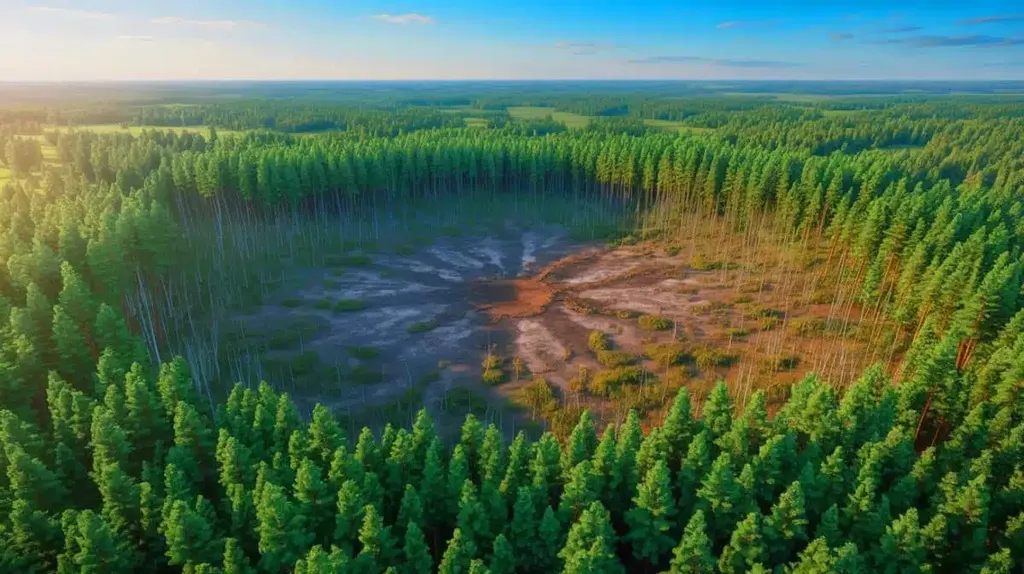In the heart of Siberia, a unique geological puzzle has been quietly unfolding since 1974, when the peaceful underground nuclear explosion “Crystal” sent shockwaves through the frozen earth. Now, new research led by Svetlana Yu. Artamonova from the Institute of Geology and Mineralogy of the Siberian Branch of the Russian Academy of Sciences (IGM SB RAS) is shedding light on the long-term environmental impacts of such explosions, with potential implications for the energy sector.
The “Crystal” explosion, conducted at a depth of 98 meters, left behind an upthrust dome with a collapsed central part, and ejected a 12-meter-long fragment of the casing column. Artamonova and her team have been studying the chemical composition of water runoffs at the epicenter, aiming to understand the processes and interconnections within the geotechnogenic system created by the explosion.
Their findings, published in the journal *Izvestiya Tomsk Polytechnic University: Engineering of Georesources* (translated from Russian), reveal a complex interplay of natural and man-made factors. “Due to probably free air convection in the artificial cover, condensation of atmospheric moisture in the cover is the main factor of water provision at the epicenter,” Artamonova explains. This process leads to the leaching of limestone, dolomite, and technogenic materials, resulting in a unique chemical composition of the water.
The team found that the water at the epicenter is a mixing of chloride-bicarbonate-sulfate magnesium-calcium brackish ultra-hard waters, containing radionuclides such as tritium (3H), bromine (Br), strontium (Sr), lithium (Li), iodine (I), potassium (K), and sodium (Na). Notably, the presence of lithium ions (Li+) could be attributed to the nuclear explosive device used in the explosion.
The research highlights the importance of assessing the geo-ecological situation of peaceful underground nuclear explosion sites, particularly those near cities and mining deposits. The findings could have significant implications for the energy sector, particularly in the context of nuclear energy and underground storage facilities.
As the world grapples with the need for clean energy solutions, understanding the long-term environmental impacts of nuclear explosions is crucial. Artamonova’s research provides valuable insights into the behavior of radionuclides in the environment, which could inform future safety measures and regulatory frameworks.
Moreover, the study underscores the need for continuous monitoring and assessment of such sites. “The results of chemical analyses of surface water, sampled at the ‘Crystal’ epicenter and its adjacent area in 2019–2021, meet the requirements for quantitative analysis,” Artamonova notes. This ongoing monitoring is essential for predicting and mitigating potential risks to human health and the environment.
In the broader context, this research could shape future developments in the field of nuclear energy and underground storage. By understanding the complex interplay of natural and man-made factors, scientists and engineers can develop more effective strategies for managing the environmental impacts of nuclear activities.
As the energy sector continues to evolve, the insights gained from this research could prove invaluable in ensuring the safe and sustainable use of nuclear energy. Artamonova’s work serves as a reminder of the importance of scientific inquiry in addressing the challenges of our time.

